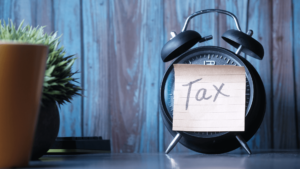Different Types of VAT Accounting Schemes Explained

VAT is one of those taxes that can give you a headache. It’s a tax charged on goods and services that are purchased or sold in the UK, but it is not always an easy process to understand…
If you are a business owner, you may need to register for VAT, depending on the type of services and goods you sell and how much income you generate.
Each VAT accounting scheme is different, and using one of these schemes effectively helps if you keep accurate financial records so that all your transactions are captured and recorded in accordance with the law. This is even more important now with Making Tax Digital introduced in the UK.
VAT can be a confusing topic, but we’ve put together this article to help you understand the different types of VAT accounting schemes. If you have any questions or would like to talk with one of our experienced Oxford-based bookkeepers, get in touch with our bookkeeping office today!
When a business sells goods or provides services, it can charge VAT based on the rate of VAT agreed with HMRC. The standard rate is 20%, and this applies to most products and services. Some items such as food are charged at a reduced rate, while some are even charged at 0%. Let’s get into the different types of VAT accounting schemes.
Standard VAT scheme
With the standard VAT method, simply add up the VAT your business has charged its clients, deduct the VAT you’ve paid on goods and services purchased, pay the difference to HMRC, and you’re done. Remember, there are strict rules about what counts as a valid VAT invoice or a receipt, so make sure you have these before you claim any VAT back.
The standard VAT method involves manually reclaiming VAT on each eligible item you buy or sell, and paying VAT from your invoices to HMRC. This method is really effective, and with the help of an online accounting system, can be straightforward to manage, but you have to make sure you keep each business record to prove what you claimed.
VAT flat rate scheme
If your business is VAT registered, using the flat rate scheme means your business pays a fixed rate of VAT to HMRC on your total sales. Your business keeps the difference between what you charge your customers and what you pay to HMRC, but you cannot reclaim the VAT on your purchases, with the exception of certain capital assets over £2,000.
Remember, however, that when you raise your invoices, you don’t charge your clients the flat rate. You charge the normal rate depending on what you supply. So it could be something at 20% rate or 5% or 0%.
The VAT Flat Rate Scheme can be easier to manage compared to the Standard VAT Scheme as you don’t have to check and record VAT on your purchases.
The flat rate your business can use is not a matter of preference and it rather depends on the type of your business. Whether the VAT Flat Rate Scheme is better for you than the Standard VAT Scheme will depend on the flat rate for your type of business, type of supplies, and your purchases. It’s good to compare the schemes before making a final decision. The VAT flat rates can be found on the HMRC website.
Easy-to-use accounting software
Looking for easy-To-Use accounting software that is compatible with Making Tax Digital for VAT?
We’ve got something for you.
VAT cash accounting scheme
The VAT Cash Accounting Scheme is a useful option for many small businesses. You don’t pay any VAT to HMRC until you actually receive payment from your clients, which can be beneficial, especially if your business is not performing as well as you hoped it would, or if you’re experiencing a quiet period.
While it’s a great option for some businesses, there could be disadvantages to consider, depending on your specific situation as it means you can claim VAT back only when you make a payment to your supplier.
Annual accounting scheme
The annual accounting scheme allows businesses to pay VAT in either nine monthly or three quarterly instalments, completing a single, annual VAT return which is used to work out any balance either owed by you or due to you from HMRC. This scheme can be matched with some other schemes, for example, The VAT Cash Accounting Scheme, the VAT Flat Rate Scheme or the VAT Retail Scheme.
A great advantage of this scheme is fewer VAT returns during the year compared with the standard four returns (one per quarter) with other schemes. However, if you’re very often in a position to reclaim VAT from HMRC, a more regular scheme will be a better choice as you don’t have to wait for your repayment for a whole year.
VAT retail scheme
VAT retail schemes are available for businesses that sell goods and with those schemes you have to calculate a correct amount of VAT in the following ways:
➡️ If you sell goods inclusive of VAT, you must deduct the VAT you have to record
➡️ For goods sold exclusive of VAT, you must add it
There are 3 types of VAT retail schemes:
- Point of Sale Scheme – Identifying and recording VAT at the time of sale
- Apportionment Scheme – Available only when buying goods for resale
- Direct Calculation Scheme – When making a small number of sales under one VAT rate and the majority under another rate
*It’s important to note that if your turnover (excluding VAT) exceeds £130 million, you must agree on a unique retail scheme with HMRC.
VAT margin scheme
The VAT margin scheme is designed to tax the difference between the amount that a business pays for specific items and the price at which it later sells those items. Once this difference is calculated, VAT is charged at a rate of 16.67%.
A business can opt to use a VAT margin scheme if it sells:
- Second-hand goods
- Art and antiques
- Collectors’ items
Businesses cannot use VAT margin schemes for any item they buy on which they are charged VAT and the sale of precious stones or metals (including investment gold)
It’s also important to mention that some VAT schemes can be used only up to a certain level of taxable turnover. Once that level is exceeded, you can’t join or you have to leave one scheme and swap it for a different one where you meet the eligibility criteria.
The world of VAT and tax can be mind-boggling at times, that’s why at Joanna Bookkeeping we can help support your business by explaining exactly what VAT is, and how it impacts you as a business owner. If you want to avoid getting stuck in red tape and make sure everything is done correctly, then let us show you how! Book a FREE initial call with our Oxford accounting team to see how we can help.

Your Accountant in Oxford
Oxford Office
Joanna Bookkeeping
The Wheelhouse Angel Court
First Floor, Angel Court
81 St Clements St
Oxford
OX4 1AW
Connect
joanna@joannabookkeeping.co.uk
01865 591952





